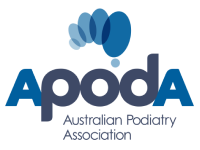Knee Pain and Injuries

The knee is a pretty straightforward joint: It bends and straightens. Despite its simplicity, there are quite a few different conditions that can affect the knee!
Patellar or quadriceps tendinopathy
- Gradual onset of pain
- Pain with squatting and/or jumping
- Tenderness on the patellar tendon or bottom point of the kneecap (patellar tendinopathy)
- Pain directly above the top of the kneecap (quadriceps tendinopathy)
- Stiffness in the morning or after rest
The patellar tendon lies between the kneecap (patella) and shin bone, and is involved with squatting and jumping motions. Patellar tendon pain is usually triggered by an increase in activity or training, such as when going from off-season to pre-season, or increasing the number of training sessions per week. It is also known as “jumper’s knee” due to the fact that jumping appears to be the primary culprit for this condition!
Like the patellar tendon, the quadriceps tendon is also heavily involved in squatting and jumping but is located above the kneecap, connecting the quadriceps muscle to the patella. Quadriceps tendinopathy shares many features with patellar tendinopathy and is usually aggravated by the same activities. Given their similarities, they are treated very similar since they are actually part of the same chain of structures in the knee!
Osgood-Schlatter disease (OSD) and Sinding-Laesen-Johansson Syndrome (SLJS)
- Gradual onset of pain
- Pain with jumping, running, kicking
- Tender over the bump near the top of the shin bone (OSD)
- May be an enlarged bump near the top of the shin bone (OSD)
- Pain on the bottom point of the kneecap (SLJS)
- Swelling
If you’ve had a sense of déja vu reading about OSD and SLJS after reading about the tendinopathies above, you wouldn’t be off the mark thinking they’re the same conditions. OSD and SLJS are effectively the paediatric versions of those conditions, affecting children rather than adults. Due to differences in physical maturity, physical stresses around the knee are concentrated in the apophysis (where the tendon joins the bone) rather than the tendons themselves, hence the slightly different areas of pain.
OSD and SLJS were previously thought to just be “growing pains” and that children would eventually grow out of it, but we now know that this is not always the case, and that both conditions can be treated effectively with physiotherapy. Rather than being sidelined from sport, children can get back to playing and enjoying their usual activities!
Patellofemoral pain syndrome (PFPS)
- Any “knees over toes” movement (e.g., squatting, going down stairs)
- Gradual onset of pain
- Pain is felt behind the kneecap
- Sometimes unable to locate a tender spot on the knee
As with the conditions described above, patients with PFPS tend to report an increase in activity just before the start of their knee pain. But unlike other types of knee conditions, it is difficult to pinpoint a specific site of pain, if at all. Most patients will report feeling pain behind the kneecap.
In contrast to other knee conditions, PFPS is not a problem with a specific structure of the knee (i.e., not a problem with a tendon, ligament, bone or other tissue), which can make it tricky to manage. Other factors that can contribute to PFPS include the function of the joints above and below the knee, body weight, and even footwear. Having a thorough assessment can help identify which factors could be contributing to your knee pain so treatment can be effectively tailored to your needs.
Patellofemoral instability
- Pain or feelings of “giving way” when going up or down stairs, running, jumping, walking
- Feeling like the kneecap might “pop out”
- Kneecap that sits off-centre on the knee
Patients with patellofemoral instability tend to lack confidence when weight-bearing or pushing through the affected leg. Patellofamoral instability can result from a traumatic dislocation of the kneecap, which “loosens” the ligaments holding it in place, making it more likely to dislocate again in the future. There are also genetic factors that can predispose someone to having patellofemoral instability, such as hypermobility, or changing the natural position of the kneecap so that it sits too high or too far to the side – all of these factors can make it easier for the kneecap move out of its usual position.
Fat pad syndrome (Hoffa’s syndrome)
- Pain around or behind the patellar tendon
- Worse when the knee is completely straight
- Pain is worse with walking than with running
- Pain with prolonged standing
- Pain with kneeling
Hoffa’s fat pad sits just behind the lower part of the kneecap and patellar tendon, and acts as a cushion to reduce pressure on structures of the knee. Repetitive movements, prolonged pressure (e.g., through kneeling) or a direct blow to the front of the knee can sometimes irritate the fat pad, leading to inflammation and pain.
Ostrochondritis dessicans (OCD)
Key features
- Pain and swelling in the knee that worsens with activity
- Feeling like the knee “gives way”
- Reduced knee bending and straightening range of motion
- A locking or catching sensation in the knee joint when bending or straightening
Not to be confused with obsessive-compulsive disorder, this version of OCD is a serious condition that happens when a small piece of bone separates from the end of the bone that forms a joint. This usually happens as a result of a lack of blood supply, leading to necrosis (tissue death) of the bone fragment. As the bone fragment dies, the cartilage covering the bone may crack and break loose, which can block the knee joint from moving properly.
Children and adolescents are more at risk of OCD as their bones have not fully matured and are therefore more susceptible to injury. However, adults can also develop OCD in rare cases. Repetitive trauma or stress to the bone over time is usually the culprit, and this can happen through high levels of participation in sports, work, or other repetitive activities. OCD is a serious condition that can have long-term effects, so it is important to be on the alert for any of the above symptoms! If caught early, chances of having a good recovery or preventing it all together are much higher.
I think I’ve got one of the above – what should I do?
Regardless of the condition, getting on top of it early on by having it properly assessed and treated can help prevent the worsening of your symptoms, and get you back to the things you enjoy. The good news is that many of the conditions described above can be managed sufficiently with physiotherapy.
If you have symptoms that match any of the above conditions, be sure to give us a call at 1300 738 609 or book online to see how our physiotherapists can help you! Let us help you find your Solution.
Get Started now, book an appointment today
Or Call 1300 738 609
Frequently Asked Questions



